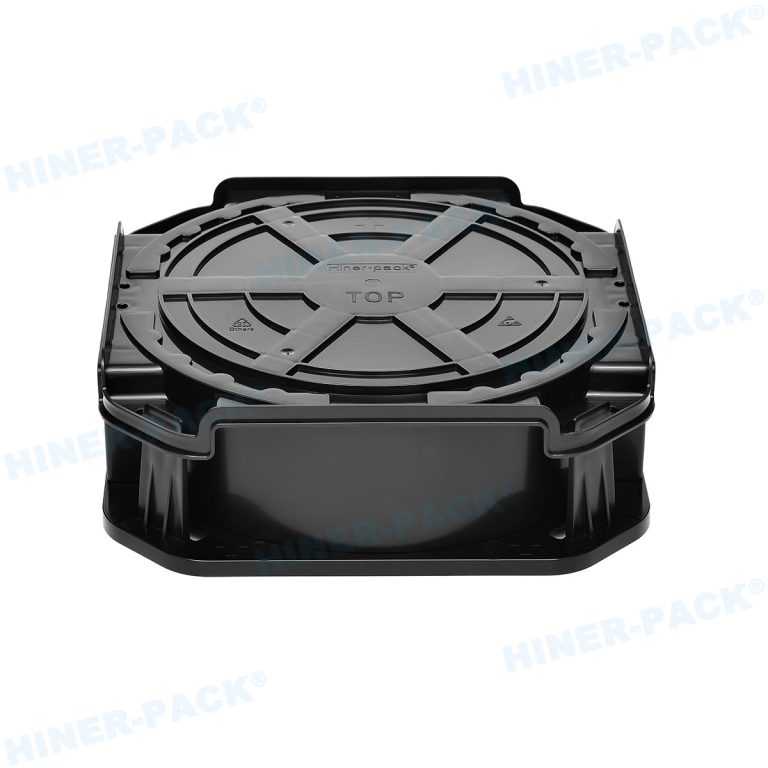Wafer shippers are specialized containers designed to safely store and transport delicate semiconductor wafers during various stages of the manufacturing and supply chain process. In the semiconductor industry, wafers are extremely fragile, expensive, and sensitive to contamination and static electricity. Even the smallest scratch, particle, or vibration can render them defective, leading to significant financial losses. Wafer shippers are therefore essential for maintaining wafer integrity during handling, storage, and shipping between cleanroom facilities, testing labs, and packaging plants. Engineered from high-quality, cleanroom-compatible materials, these shippers provide a combination of mechanical protection, electrostatic safety, and contamination control.
The Role and Importance of Wafer Shippers
Semiconductor wafers serve as the foundation for integrated circuits, microchips, and advanced electronic components used in modern technology—from smartphones and computers to automotive systems and medical devices. During production, wafers pass through multiple stages, including fabrication, dicing, testing, and packaging. At each step, they must be handled and transported with extreme care to prevent contamination or physical damage.
Wafer shippers are specifically designed to meet these challenges. They provide a sealed, anti-static environment that isolates wafers from dust, moisture, and physical impact. The interior of the shipper typically includes cushioned or flexible frames that securely hold wafer rings, frames, or cassettes in place, ensuring stability during transit. Advanced models even feature vibration damping systems to protect wafers from mechanical shock during long-distance transportation. These shippers are critical not only for the protection of wafers but also for maintaining the cleanliness and process control required in the semiconductor industry.
Key Features and Design Characteristics
Wafer shippers are manufactured with meticulous attention to detail and precision engineering to meet semiconductor industry standards. Their design incorporates a variety of advanced features that ensure maximum safety and performance:
- Anti-Static Materials: Constructed from ESD-safe polymers that prevent electrostatic discharge (ESD), protecting sensitive wafer surfaces from damage.
- Cleanroom Compatibility: Made from materials that generate minimal particles and gases, suitable for ISO Class 5 or better cleanroom environments.
- Sealed Construction: Airtight sealing to prevent contamination from dust, moisture, or external pollutants.
- Shock Absorption: Built-in cushioning systems to reduce vibration and impact during transport.
- Stackable and Space-Saving: Allows efficient storage and handling in manufacturing or shipping facilities.
- Transparent or Translucent Body: Enables visual inspection of wafers without exposing them to contamination.
- Customization Options: Available for different wafer diameters, from 6-inch to 12-inch, and tailored to various frame types or cassette systems.
Every detail of the design ensures that wafers remain safe, stable, and clean throughout handling, whether transported across a cleanroom or shipped globally.
Applications in Semiconductor Manufacturing and Logistics
Wafer shippers play a vital role across all stages of semiconductor production and distribution. In wafer fabrication plants, they are used to transfer wafers between equipment stations and cleanroom environments. During testing and inspection, they protect wafers while moving between measurement tools, reducing handling risks.
In assembly and packaging facilities, wafer shippers safely hold diced wafers or wafer frames during bonding and packaging processes. They are also essential for global logistics, ensuring that wafers are shipped between manufacturers, subcontractors, and clients without damage or contamination. Moreover, research and development labs use wafer shippers for prototype or small-batch wafer handling under controlled conditions.
Benefits of Using Wafer Shippers
The widespread adoption of wafer shippers is driven by the numerous benefits they offer in terms of protection, efficiency, and cost savings:
- Enhanced Safety: Prevents mechanical damage and contamination during handling and shipping.
- Electrostatic Protection: ESD-safe materials protect wafers from static-related failures.
- Operational Efficiency: Simplifies wafer transportation and reduces manual handling risks.
- Cleanroom Compliance: Maintains the purity and quality required for semiconductor processes.
- Reusable and Eco-Friendly: Made from durable materials that support long-term use, reducing waste.
- Customizable Design: Adapts to specific wafer sizes, frame types, and automation systems.
By ensuring that wafers reach their destination intact, wafer shippers directly contribute to higher yield rates, lower production losses, and improved overall efficiency in semiconductor manufacturing.
Quality Assurance and Standards
Manufacturers produce wafer shippers under strict quality control systems that comply with global semiconductor standards such as SEMI and ISO. Each unit undergoes testing for particle emission, static resistance, sealing performance, and mechanical durability. Precision injection molding and contamination-free assembly ensure consistent quality and reliability.
Customization options—such as RFID tagging, barcoding, and color coding—are also available for easy traceability and inventory management, making wafer logistics smarter and more efficient.
Conclusion
Wafer shippers are a cornerstone of modern semiconductor manufacturing, providing essential protection for the delicate and valuable wafers that power today’s technology. Their advanced design, combining ESD protection, cleanroom compatibility, and mechanical stability, ensures that wafers remain safe and contamination-free throughout every stage of production and shipping. As the semiconductor industry continues to evolve toward higher precision and miniaturization, wafer shippers will remain indispensable for ensuring product quality, reliability, and operational efficiency. Robust, reusable, and engineered for perfection, they play a vital role in safeguarding the foundation of modern electronics.


